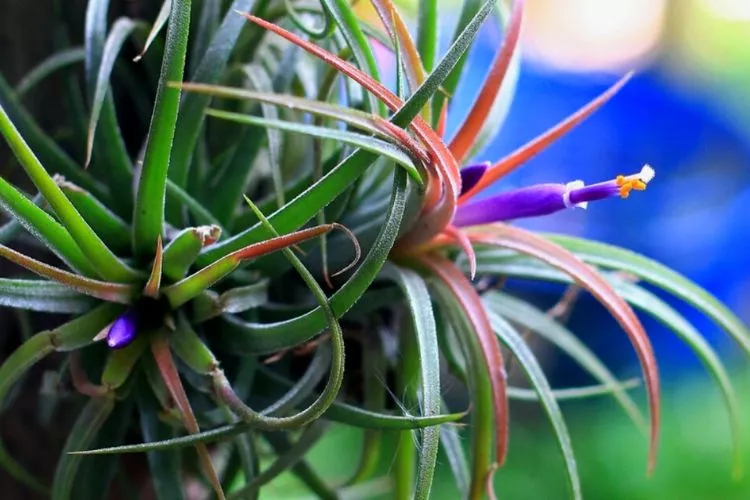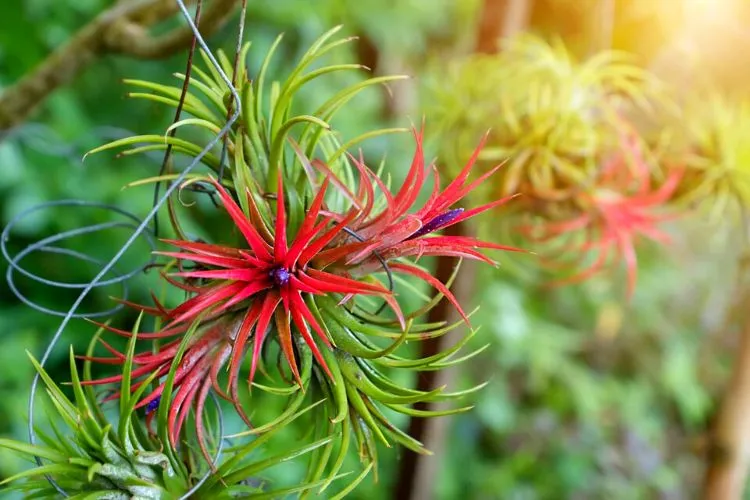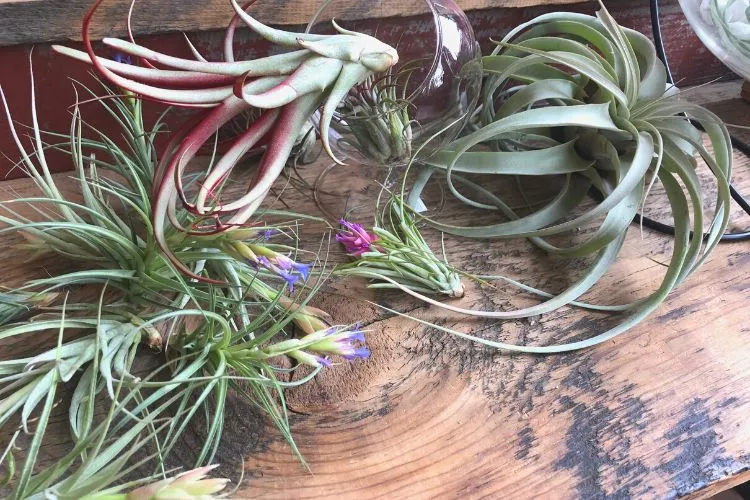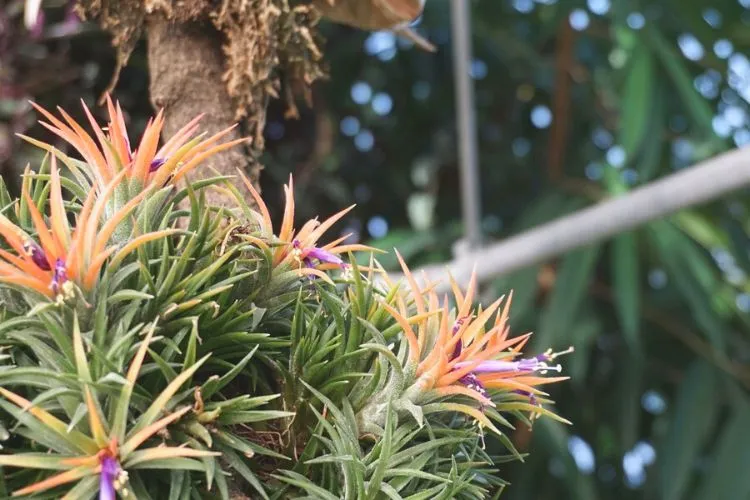Air plants, a.k.a. Tillandsia, are fascinating plants that have gained much popularity recently. This is due to their unique appearance and low-maintenance requirements.
But, do air plants like humidity?
Like all plants, humidity is important in the growth and survival of the air plants. In fact, if you don’t provide a certain level of humidity to them, they won’t be able to survive for long.
Humidity refers to the amount of water vapor in the air. It affects a plant’s ability to absorb water through its leaves. Plants require a certain humidity level to thrive, and air plants are no exception.
In this article, we will explore the relationship between air plants and humidity.

We’ll also provide tips for maintaining the ideal humidity levels to ensure healthy growth. Whether you’re a seasoned air plant enthusiast or just starting, read on to learn more about these interesting plants and how to care for them. Let’s go!
Table of Contents
Do Air Plants Like Humidity?
The answer is a resounding yes, air plant like humidity! They need a certain level of that to thrive. An ideal humidity range for air plants is between 50-60%. If the humidity levels fall below this range, these plants can become dehydrated.
This can lead to brown, crispy leaves and a withered appearance. On the other hand, excessive humidity can lead to root rot and fungal growth. Let’s look at the issues varying humidity levels can cause in detail.
Low Humidity
Low humidity levels cause the rate of air plant growth and reproduction to be affected. In short, when the air is dry, air plants may take longer to produce offsets.
These small plantlets grow from the base of the plant and continue to create the plant’s unique appearance as it ages. In addition, air plants may also produce fewer flowers when the humidity is low.
Hgh Humidity
High humidity levels can also negatively affect air plants. When the air is too humid, the plants struggle to receive enough air circulation. This can lead to excess moisture buildup around the leaves and roots. This can create an environment that promotes fungal and bacterial growth and can lead to root rot.
Therefore, it is important to maintain a consistent humidity level of humidity n order for air plants to thrive. These conditions can be achieved through various methods, such as misting, using humidifiers, or placing the plants on a humidity tray.
Tips for maintaining humidity levels For Air Plants
Maintaining ideal humidity levels is crucial for the health and growth of air plants. Here are some tips for maintaining the right levels of humidity:

Methods of increasing humidity
- Use a humidifier: A humidifier is an excellent way to increase humidity levels in a room. It adds moisture to the air and can be adjusted to maintain a constant level ideal for the plant.
- Use a humidity tray: A humidity tray is a shallow tray that you fill with water and have your air plants sit on. As the water evaporates, it creates a humid environment for the plants.
- Group plants together: Placing multiple air plants together can help create a more humid microclimate around the plants. This is a tactic that many novice growers aren’t aware of.
Methods of decreasing humidity
- Use a dehumidifier: A dehumidifier has the opposite effect of a humidifier. It can help to decrease humidity levels in a room. It removes any excess moisture from the air, which can be extremely beneficial in humid climates.
- Increase air circulation: Simply opening windows or using a fan can help decrease humidity levels by promoting much needed airflow.
Mistakes to avoid
Over-misting
While misting can be one of the most effective ways to increase humidity levels, it’s important not to overdo it. Too much moisture can promote fungal growth and subsequential root rot.
Placing plants in direct sunlight
Direct sunlight can cause any water stores to evaporate faster than they can be utilized., This leads to dry air and low humidity levels. The ideal location for an air plant depends on the sunlight it receives.
Let’s have a look at the different sides of a plant’s sun exposure to determine the best spot:
North-facing locations receive the least amount of rays and may not be suitable for air plants that require bright, indirect light. South-facing spots receive the most sunlight, which can be too intense for air plants.
East-facing locations receive morning sun and afternoon shade, which is ideal. West-facing locations receive intense afternoon sun that can cause air plants to dry out.
The best location for an air plant depends on its specific needs and environmental conditions. Observing the plant and adjusting its placement is important to ensure it receives the right amount of light.
Using tap water
Using tap water can be costly for air plants because it often contains impurities that can harm the plant. Tap water can contain various minerals, such as chlorine, fluoride, and heavy metals like copper and lead, which can accumulate in the leaves and cause them to turn brown or develop white spots.
In addition, tap water may contain salts and other chemicals that can build up in the plant’s tissues over time. This leads to root damage and stunted growth.
For example, chlorine is added to tap water as a disinfectant. However, it can be harmful to air plants by burning and drying out their leaves. Fluoride, added to tap water to help prevent tooth decay, can also cause leaf burn and browning, especially if the plant is sensitive to fluoride.
Another common impurity found in tap water is “hard” water, which is caused by high levels of calcium and magnesium. Hard water can lead to the buildup of mineral deposits within the air plants’ leaves, making them appear white and crusty.
This buildup also interferes with the plant’s ability to absorb water and nutrients. This process leads to poor growth and even death.
To avoid the negative effects of tap water on your air plants, try to use filtered or bottled water instead. This will help remove most impurities and provide the plant with the clean, fresh water it needs to thrive.
Where is the best place to put an air plant?
The best place to put an air plant is in a location with bright, indirect light. Avoid placing air plants in direct sunlight, which can cause the leaves to scorch and dry out. Air plants can thrive in various locations, such as on a windowsill, in a terrarium, or even mounted on a wall.
Be sure to choose a location with good air circulation and appropriate humidity levels to ensure the plant’s health and well-being are accounted for.
How do I know if my air plant is happy?
If you’re new to air plant care, you may wonder how to tell if your plant is healthy and happy. The signs of a healthy air plant include vibrant, colorful leaves and a plump, hydrated appearance. The plant should feel firm when touched, but it should not be overly dry or wilted.

When an air plant is happy, it will produce smaller offsets or plantlets that grow out from the base of the plant. This presence of new growth clearly indicates that the plant is happy and thriving. Air plants may also produce flowers under the right conditions, which is another sign of good health and proper care.
How do I make my air plant thrive?
Air plants are known for their extremely low maintenance and unique appearance, but proper care is still essential for survival. While it can usually be pretty easy to maintain air plant health, it’s important to remember that they still require the right conditions to thrive.

Here are some tips for making your air plant thrive:
Light
Air plants require bright, indirect light to thrive. They can tolerate some direct sunlight. However, too much will cause leaf burn. The best types of light for air plants are natural, filtered light, and fluorescent lighting.
Water
Watering air plants is one of the most important aspects of care. To water air plants, simply soak them in water for 20-30 minutes every one to two weeks. After soaking them, gently shake off any excess water and dry the plant in a well-ventilated area. Avoid overwatering, which can lead to root rot, and encourage fungal growth.
Plant Soaking
Soaking is a critical part of air plant care, as it ensures the plant can receive the water it needs to thrive. To soak an air plant, you’ll need a bowl or sink that is large enough to accommodate the plant. Then proceed to do the following:
- Start by filling the bowl or sink with room temperature water. If possible, use filtered or bottled water, as tap water may contain chemicals or minerals that can harm the plant.
- Place the air plant into the water, submerging it completely. The water should fully cover the plant, and the leaves should face downwards.
- Allow the plant to soak for at least 20-30 minutes. This will give it the time it needs to absorb the water it needs through its leaves.
- After soaking, gently shake any excess water from the plant. You can also pat it dry with a soft towel or paper towel.
- Proceed by placing the air plant in a well-ventilated area to dry. It’s important to ensure the plant is completely dry before returning it to its spot. Otherwise, the excess moisture can lead to rot or fungal growth.
It’s important to note that not all air plants require the same amount of soaking. Some of them, such as those with thinner leaves, may require more frequent soaking. At the same time, others with thicker leaves may need less. It’s important to keep an eye on your air plant and adjust your care routine as needed to ensure it stays healthy and happy.
Air Circulation
Adequate air circulation is quite important for air plants, as it helps prevent any moisture buildup and promotes healthy growth. Avoid placing them in closed contaminants such as garages without windows or other areas with stagnant air. Providing adequate air circulation can be achieved through natural air flow, fans, or keeping air plants in open containers.
Temperature
Air plants thrive when temperatures are between 50-90°F. Extreme temperatures can cause damage to the plant, so it’s important to regulate the temperature around what the plant is most comfortable in. Keep them away from vents or areas with hot or cold drafts.
Fertilizer
Air plants require very little in the way of plant food and can be harmed by over-fertilization. In any case, use a low-nitrogen, water-soluble fertilizer and only apply once a month during the growing season.
Frequently Asked Questions (FAQs)
Do air plants like humidifiers?
Yes, air plants can benefit from using humidifiers which assist by increasing moisture levels. Be careful not to overdo it because too much moisture can lead to fungal growth and other issues.
Should you mist air plants?
Misting can be a useful way to increase humidity levels in an air plant’s environment. However, avoiding over-misting is important, as this can lead to fungal growth and root rot.
Do air plants do well in bathrooms?
Bathrooms are a great spot for air plants, as they tend to be more humid than other areas of the home. Just be sure to provide adequate airflow and avoid placing the plant too close to the shower or other sources of moisture.
Conclusion:
In conclusion, understanding the relationship between air plants and humidity is crucial for their health and overall well-being. By following the tips and advice in this guide, you can ensure that your air plants are thriving and happy.
We hope that this guide has helped improve your air plant care knowledge. For more information and similar topics, visit our website and check back soon for more.


